What would you give to pursue your passion?
You’ve heard the phrase, “I’d give my right arm to…” typically followed by a wild dream. Well, how about giving your right leg to pursue your passion? How many people would actually do it?
Here’s one courageous person who did just that. Craig DeMartino was faced with an overwhelming choice after a rock climbing accident in 2002. Unable to continue climbing with two broken legs, Craig made the craziest decision of his life - he decided to amputate his right leg so he could continue to live out his passion for climbing.
Today, Craig is a full-time rock climber and is able to encourage countless people who are walking through trauma.
We asked Craig a few questions to learn how he was able to walk through such a traumatic time and what motivates him moving forward. Craig has some awesome wisdom to share, and we hope it will inspire you as well.
Hint: Read to the end to find out which Groove Ring Craig wears while climbing!
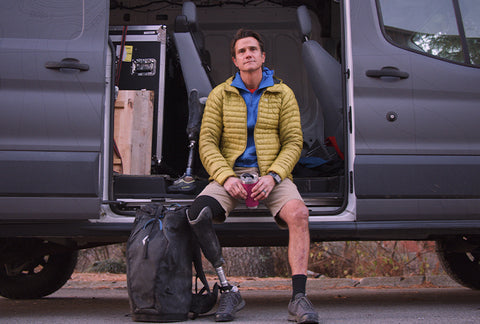
Craig’s journey into rock climbing:
Craig’s climbing career started out with the last thing you’d expect: a ‘fear of heights.’ He says, “My dad is deathly afraid of heights. When he drives across a bridge, he can’t look over the side. So when I was younger, I just assumed that I had a fear of heights.”
Craig was so convinced that he was afraid of heights that he opted out of activities if they were too high in the air. Then, he was invited to an unusual bachelor party in Pennsylvania, where the main event was climbing. His first thought was a concern. “I thought, ‘I’m afraid of heights. This is not a good idea.’” Not wanting to disappoint his best friend, Craig went along and gave rock climbing a try. “I thought ‘Huh, that’s weird. That didn’t really bother me. Maybe I’m not afraid of heights,’” Craig says. “I thought, ‘Oh, I betcha when I go higher, that’s when it’ll kick in.’ But it never kicked in.”
While Craig didn’t grow up in a family of rock climbers, they loved the outdoors. He says, “I grew up in a family of people who went outside. They didn’t climb at all, but my dad and brother and I were always hunting and fishing, so my dad just took us camping all the time. I loved spending time outside. The beginning of my life built me and formed my ideas of what ‘outside’ should be like, and then climbing just fit right into that.”
It took a while for Craig to get started in rock climbing. He was twenty-one before he tried it for the first time, and he fell in love with it right away. “I was a super unathletic kid,” Craig says. “I loved the mental side of climbing, I loved the natural space, and I loved being with my friends. And that’s all climbing is... it just clicked with me right away and I just kept chasing it. I’ve been chasing it ever since.”
Now, Craig climbs full time. He says, “When I got hurt back in 2002, I went back to climbing fairly quickly and started pursuing it on a professional level which is something I hadn’t done prior to being injured. It allowed me to be able to climb full time, around the country and around the world, and also to teach adaptive climbing. I work for a non-profit based in Denver where I teach people who have gone through heavy trauma how to climb and use their new bodies or new normal - start moving again, getting active again… get into the climbing space.”
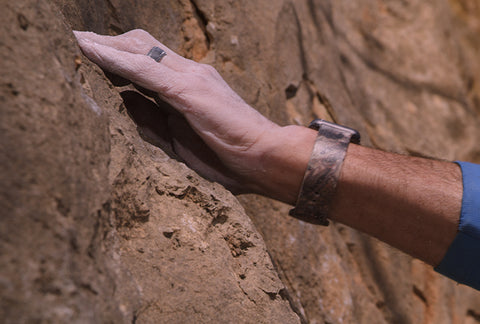
How did Craig start climbing again after the accident?
In 2002, Craig was accidentally dropped 100 feet, the equivalent of a 10-story building. His survival was miraculous.
When asked what gave him the determination to start climbing again, Craig said, “At that point, I had been climbing 13-14 years. For me, it was more of a curiosity - I didn’t want the accident to determine the outcome of the rest of my life.”
As months went by after the accident, Craig started to realize that his healing wasn’t going to get much better. He says, “You know how bad you’re hurt after a certain amount of time… around month three you start to understand, ‘Oh, I’m not going to get “better” so what is this going to look like?’”
In 2003, Craig made the decision to amputate his leg. He says, “I realized ‘okay, it’s not going to work the way it is. It’s still in a cast 18 months after the accident, and it will never recover. What am I going to do?’ The idea was if I amputate, I have a shot at having one leg that isn’t always messed up. Because I broke both legs pretty badly.”
Craig didn’t put unnecessary pressure on himself to “get back to normal” after the accident. He took things slow and allowed himself to move at a healthy pace. He says, “It wasn’t a determination of I’m going to overcome this. It was more of ‘I’m just going to go and do this again and see what I think. I really loved this before. Do I still have that feeling for it?’” For Craig, that love for climbing didn’t come back right away. He says, “It was terrifying. It was more like a start/stop kind of a thing for me. I would think ‘I can’t do this’ and swear it off, and then enjoy pieces of it…” Craig says that as time went on, the fear decreased.
Craig added that when people go through trauma, they can sometimes put too much pressure on themselves. He says, “A lot of people tend to force things a little bit too much after trauma. They want to be back exactly where they were, and you’re never there. That is just not helping it happen. You are never back to the same person because you just can’t be. For me, it was realizing ‘Okay, if I’m not going to be that person, what am I going to be? And is climbing a piece of that person?’ And the answer was yes. Once I understood that I let it guide me. It took me completely new directions I didn’t even know existed. It ended up being much greater than I ever would have hoped for.”
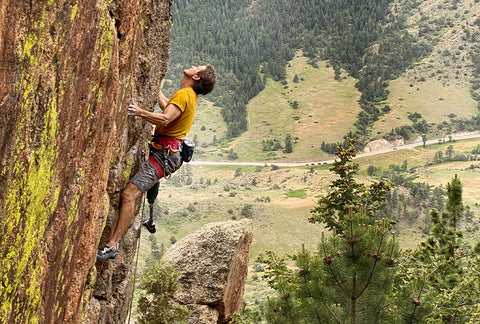
What is Craig's advice for those walking through trauma?
Craig’s encouragement for those who are stepping into a new normal after trauma is to embrace what is, but don’t be afraid to hope for the future.
He says, “I always tell people, don’t get hung up on now. Everyone always says be present. And I try to be present. But don’t get hung up on the now. It’s not forever.” Craig works with a lot of people, including veterans who experience PTSD as well as amputees. The thought of facing life with a new challenge can be devastating, but Craig encourages them to focus on the future. Craig says, “It’s a fluid situation, always, and, for me, injured in 2002, amputated in ‘03, it’s still a fluid situation. My body is always changing, just like we all are always evolving. You have to just embrace that. It’s going to change, good or bad, but don’t hang up on that. Realize it’s a process. Good or bad, you’re going through it, then move on to the next thing, whatever that is.”
“Don’t get hung up on just what’s happening right now, get hung up on where you want to get to. If you’re having a really bad day, tomorrow is not going to repeat it. Move through. Just let it happen.”
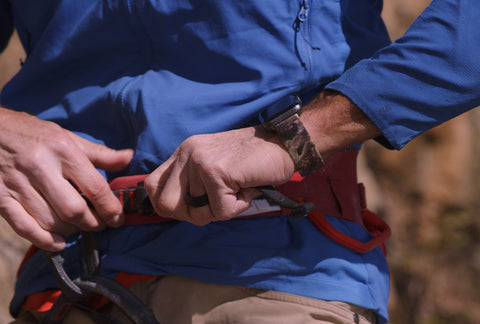
What is Craig DeMartino’s advice for people who are trying to discover which passion to pursue?
Craig has been rock climbing for 30 years, and he loves it more than any other activity. His focus is inspiring, so we asked him how he was able to choose just one thing to pour all of his heart, soul, and life into.
Craig said he has tried other things, but they just didn’t check all of the boxes for him. He says, “I think for me it was really obvious. There are all of these distractions and all of these things you can do. I’ve experimented with other things - I’ve skied a fair amount and I’ve kayaked, things like that. Climbing fits all of my buttons.”
It’s important, Craig says, to find a passion that is fun even when it is hard. Some things are hard all the time, but some things are fun even in tough moments. Craig also added that simplicity is instrumental in narrowing down the many options that we have open to us.
He says, “Keep it really simple. I’m a big fan of simplicity. I don’t like to clutter my life up with drama, or just crap I don’t need. I’ve learned that since getting hurt so bad. When you get hurt really bad you only have certain windows of time to do things. You realize that time is precious and I need to respect that and use it the best I can.”
Rock climbing is an all-consuming activity for Craig and his wife, Cyndy, and they never get tired of it. Craig says, “My wife and I joke about this all the time. People probably think we’re really strange because literally all we do is go climb. It’s so simple and yet people clutter it up because there are so many things you could do. You just have to find that one that really resonates with your soul and just pursue that one. Don’t even worry about what people think or what they expect. Just go do that.”
One piece of advice Craig heard from a professional skier has stuck with him since he was young. He says, “I remember reading this interview with this guy - he’s a really famous ski bum kind of a guy. He said, “When I was younger, I thought there was much more to do in life than to just ski down a hill. But then as I got older and did those things, I realized, Eh, there’s really not that much more to do than just ski down a hill.” He just stripped everything away and went back to what he loved. And I thought, “that guy is a genius. I want to do that.”
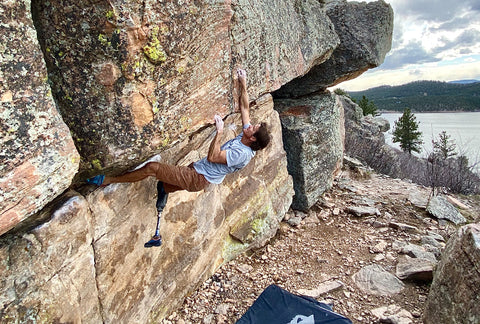
How does Craig keep his life simple?
Craig and Cyndy have been climbing for years. They love to go on adventures and see things most people never get to see. He says, “While climbing, you get to be in these amazing spaces. What drew me to it was being in those natural spaces and then also being able to do it in this really unique, physical, and mental way. I really enjoy the areas we end up in... these gorgeous, fantastic canyons and gorges and cliffs… you’re able to see these amazing things that not a lot of people get to see. And we get to see them on a regular basis.”
The secret to simplicity, according to Craig, comes down to decreasing drama and extra hassles from daily life. “We are very big on experiences as opposed to things,” Craig says. “My wife and I love to go to different parts of the world and climb. Those experiences are much more important to me than having a nice car… I’m not really hung up on that stuff. I decided that I’m not going to get tied up in a bunch of things that I see around me. I don’t look for drama, or insert myself into other people’s problems. I don’t take those problems on as my own…. It’s a pretty simple existence.”
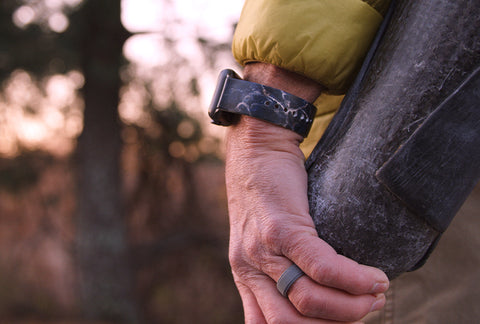
What does Craig value most in his life?
When asked what he values most in his life, Craig immediately thought of his family and close relationships. He says, “I value my family and the group of people I come in contact with through the adaptive sports and through climbing.”
He went on to say that his family is his biggest priority. He says, “My relationship with my wife, son, and daughter, is the most important thing to me. From there, I value my extended family and then the climbing community. Those are the things I value the most. I just try to focus on those simple things.”
Craig added that he is thankful for the relationships he has with his wife, son, and daughter. He says, “They are the ones who care about me the most and my well-being. Having seen what Cyndy did when I got hurt, and the way our lives have changed, how she’s able to adapt... Fostering that relationship and the importance of that relationship is what I’m most proud of. My wife and I met in a climbing gym a long time ago. She’s my favorite climbing partner. We climb together, train together, and travel together.”
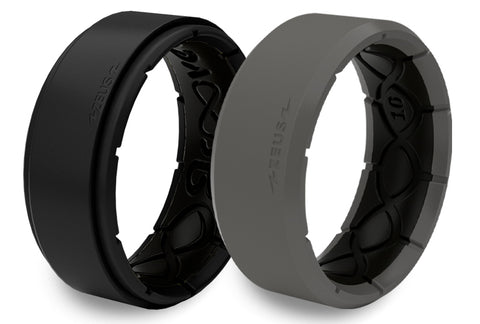
Which Groove Ring does Craig use for climbing?
For a climber, a ring can protect fingers or put them at risk. The mistake of leaving a metal wedding ring on the finger could result in the loss of that finger or worse.
Craig says, “If you wear a metal wedding band and forget and climb, you can actually tear the skin off of your finger. It’s called degloving. With Groove Rings, you could literally hang from the ring and it wouldn’t do that.”
Groove Rings are made to break away safely from the finger if snagged, and that makes all the difference for climbers. Plus, Groove Rings don’t wear out quickly! Craig says, “That’s the thing that always appeals to me about these rings, is whether you remember or not, the ring isn’t going to hurt you. And if you forget, you don’t tear it up really bad. I’ve seen the cheaper ones online and they tear apart. They’re super cheap. You can beat the heck out of these Groove Rings.”
Craig DeMartino says his favorite Groove Ring is the Zeus in midnight black. He says, “I had a metal wedding ring that I wore on my neck because I couldn’t wear a ring around my finger anymore from climbing. I did that for a long, long time. Then, I met someone who had a silicone ring, so I got online and looked at the Groove Ring because I liked that it seemed burlier to me - I’m kind of hard on things. I bought two first and was like ‘These things are rad.’ I think it’s been a year now and I have the same original ring and I beat the crap out of it. They’ve been awesome with giving me other rings but I love the Zeus ones because you can beat the heck out of them and they still look pretty darn good to me.”
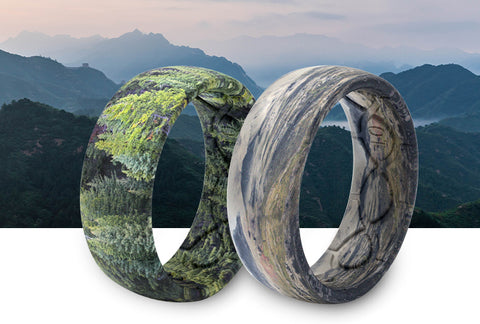
While Craig prefers the Zeus ring, his wife loves her thin style Groove Ring. Craig said, “Cyndy has the Groove Ring Thin in Solid Snow. She likes hers to be a little thinner because they stretch a little more, whereas I like the fact that the Zeus style rings don’t stretch as much. If I forget to take it off when I’m climbing, it doesn’t matter because it is silicone so it won’t tear your finger up. I’ve actually climbed whole routes with it on and totally forgot that I have it on.”
Cyndy also has a Groove Watch Band, and Craig says she loves it. “Cyndy has a Samsung watch band. You’re not going to hurt yourself with these. But they’re going to last for as long as you want them to last.
Contact Craig
If you’d like to learn more about Craig and his story, you can visit his website here or follow him on Instagram.
Now that you’re inspired to dream big… go on and find that passion that grabs your soul and live it to the max! You’ve got this!
Keep Groovin’!
